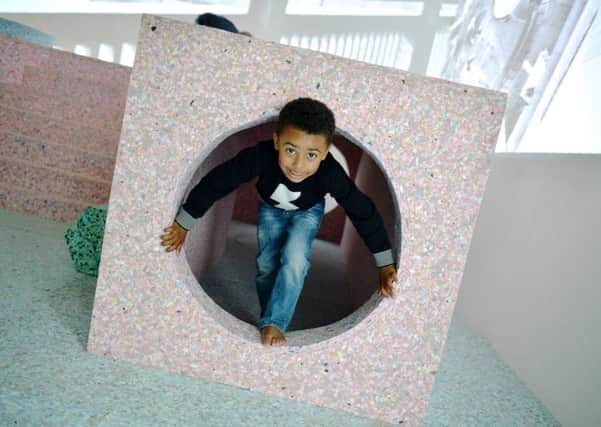Playgrounds of the past and the digital future in Sheffield


The retro version is at Park Hill where an art installation called The Brutalist Playground reproduces the concrete play areas designed as part of post-war housing estates and invites children to clamber all over its abstract shapes.
Opening next week at the Site Gallery is Playground, a free exhibition of digital artworks which youngsters can play and interact with.
Advertisement
Hide AdAdvertisement
Hide AdThe Brutalist Playground recalls the play spaces set amid the high rise blocks of flats constructed in the 1950s and 1960s. Mostly made of concrete, they were designed to reflect the architecture of their surroundings.
By the early 1970s they had fallen out of favour, both in terms of their design and child safety, and most have disappeared.
The Royal Institute of British Architects commissioned 2015 Turner Prize winners Assemble and artist Simon Terrill to use original plans and photographs to create The Brutal Playground which went on show in London last year and then Aberdeen.
The centrepiece is ‘the Flying Saucer,’ a tilted circular platform from the Churchill Gardens estate in London.
Advertisement
Hide AdAdvertisement
Hide AdFor the Sheffield exhibition, part of the Yorkshire Festival, there is an additional feature based on a tunnel in Park Hill’s original playgrounds built by architects Jack Lynn and Ivor Smith between 1957-61.
Rather than concrete, however, the installation is made of wood and steel frames covered in soft rubbery material (requiring visitors to remove their shoes).
The Brutalist Playground is at S1 Artspace, Park Hill, until September 11, open Wednesday to Sunday, noon to 5pm.
Much less physical is Playground, a brand new exhibition for children running alongside the Children’s Media Conference. At the Site Gallery from July 5 to 10, it will comprise 12 exhibits plus a Maker Room where kids can get their hands dirty.
Advertisement
Hide AdAdvertisement
Hide AdWith Blinkies, a child’s drawing can be placed over a phone or tablet, which will turn the drawing into an animation and make it come to life. The Cardboard Arcade is a portable pop-up video game arcade while Fairy Doors is a hide-and-seek game.
The Avakai Twins are wooden toys which are connected to each other using Bluetooth technology. Anything one doll experiences is sent to another doll.
Also included are Google Cardboard headsets which use smartphones to create mini virtual reality games. Children can also get hands-on with electronic components. The free exhibition has been curated for five to 12 year olds - but everyone is welcome. Visit www.cmcplayground.com for details.